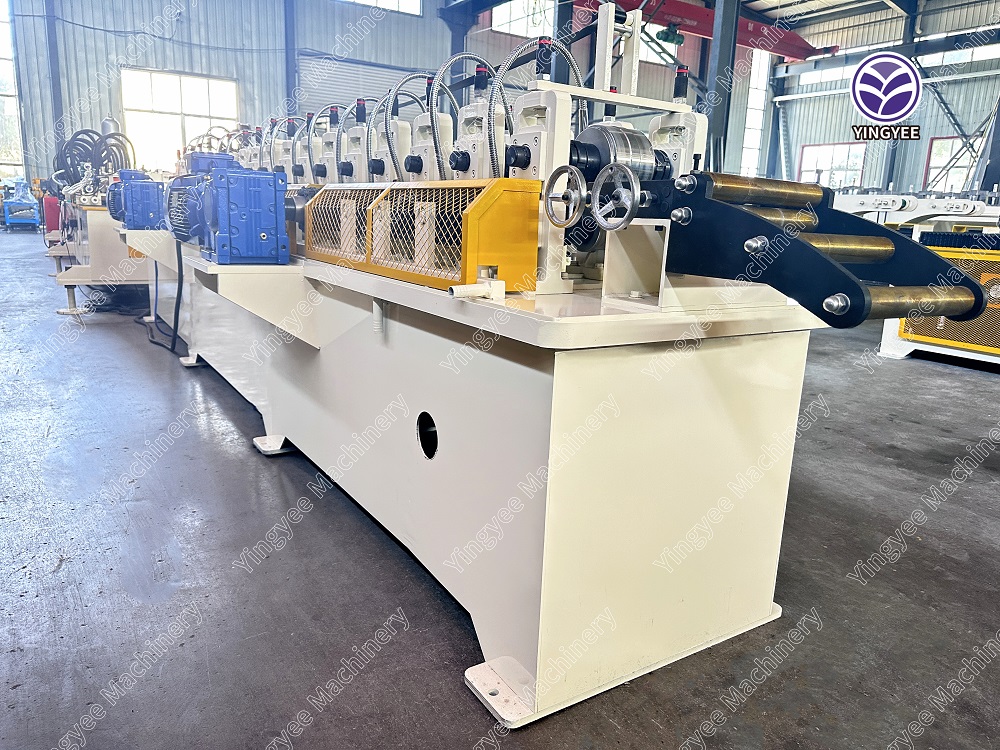
The Advancements of Vertical Large Span Roll Forming Machines
In the realm of modern manufacturing, roll forming has garnered significant attention, especially with the advent of innovative machines designed for large-span applications. One such innovation is the vertical large span roll forming machine, a breakthrough technology that has revolutionized the production of structural components in various industries. This article explores the features, benefits, and applications of vertical large span roll forming machines.
Understanding Roll Forming
Roll forming is a continuous bending process in which metal strips are passed through sequential rollers to create desired cross-sectional profiles. This manufacturing technique is widely used because it allows for high production rates, minimal material waste, and the ability to create complex shapes with precision. However, traditional roll forming machines often limit the size and span of the profiles they can produce due to their horizontal design.
The Vertical Design
The vertical large span roll forming machine addresses the limitations of its horizontal counterparts. By adopting a vertical configuration, these machines can accommodate longer and taller profiles while maintaining structural integrity. This design allows for greater flexibility in profile shape and dimensions, making it particularly advantageous for industries such as construction, automotive, and aerospace.
Key Features
1. Increased Span and Height As the name suggests, vertical large span roll forming machines can produce profiles with larger spans and heights compared to traditional machines. This is crucial for creating components like roof trusses, structural beams, and even large panels, which require significant structural support.
2. Enhanced Production Efficiency With the ability to continuously roll form longer sections, these machines reduce the number of required joints in the final product. Fewer joints not only enhance the strength of the structures but also streamline the manufacturing process, leading to increased efficiency and reduced labor costs.

3. Customizable Profiles Manufacturers can easily adjust the design of the rollers to create bespoke profiles tailored to specific project requirements. This adaptability is essential in industries where customized solutions are often necessary.
4. Robust Construction Vertical large span roll forming machines are designed with durability in mind. Their robust construction ensures longevity, even when operating under heavy loads and continuous production environments.
Benefits for Industries
The introduction of vertical large span roll forming machines has brought about several advantages across various sectors
- Construction In construction, the ability to produce large trusses and beams on-site significantly reduces lead times and shipping costs. Additionally, structures made using these large-span profiles often require fewer supports, allowing for more open space within buildings.
- Automotive The automotive industry benefits from weight reduction and increased strength in body panels produced using advanced roll forming techniques. This is vital in the pursuit of more fuel-efficient vehicles without compromising safety.
- Aerospace In aerospace applications, precision and lightweight structures are paramount. Vertical large span roll forming machines enable the production of custom airframe components with exact specifications, enhancing aircraft performance and safety.
Conclusion
The vertical large span roll forming machine represents a significant advancement in roll forming technology, addressing the growing demand for large and complex profiles in various industries. Its ability to produce robust yet lightweight structures efficiently makes it an invaluable asset in modern manufacturing. As industries continue to evolve and require more innovative solutions, the role of such machines will become increasingly critical in shaping the future of production processes. Embracing this technology is not only beneficial for manufacturers but also for the overall economy, contributing to advancements in engineering, design, and sustainability.